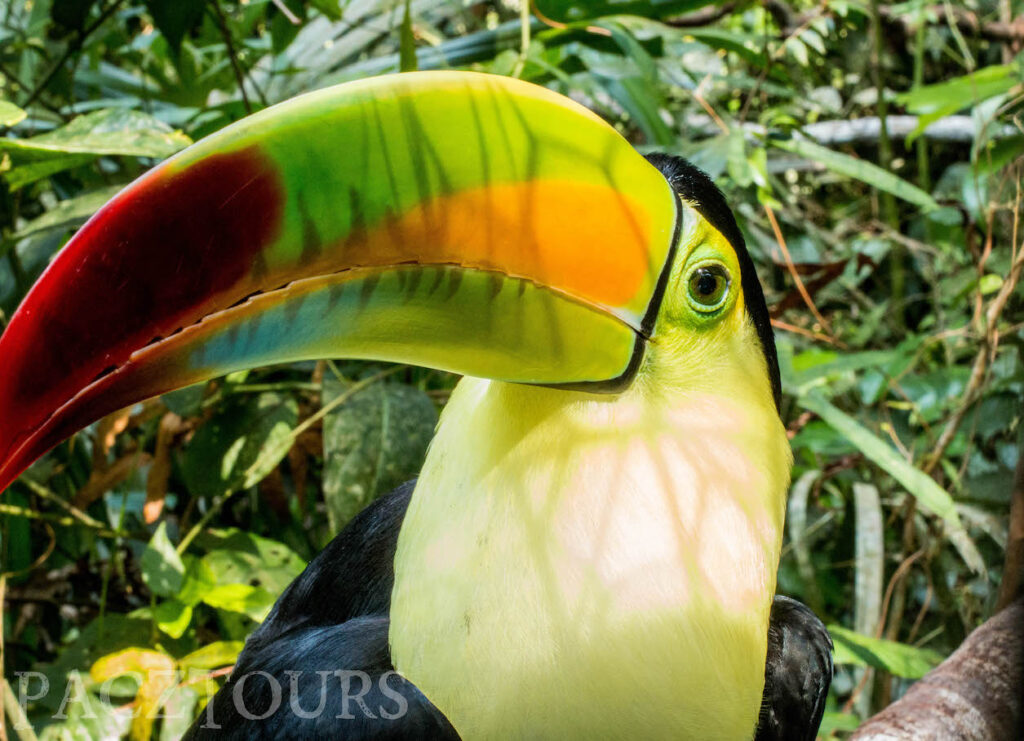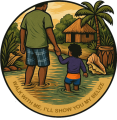Belize’s Piece of the Selva Maya: The Great Rainforest That Crosses Borders
Standing in the Belizean rainforest, it’s easy to feel utterly engulfed by green. The canopy closes overhead, the air hums with life, and every breath connects you to something vast—something that defies borders. This isn’t just Belize’s rainforest. It’s the Selva Maya: one of the largest tropical forests in the Americas after the Amazon, spanning over 13 million hectares across southern Mexico, northern Guatemala, and Belize.
Here, rivers, mountains, and culture all merge into a living corridor of memory and survival. The jaguar still roams. Scarlet macaws fly over ancient temples. And deep inside, the Maya world continues.
What Is the Selva Maya?
The Selva Maya is the great green heart of northern Central America. It covers the Petén region of Guatemala, southern Mexico’s Campeche, Quintana Roo, and Yucatán, and yes — a vital portion here in Belize.
It’s home to jaguars, Baird’s tapirs, scarlet macaws, keel-billed toucans, mahogany giants, and hundreds of orchid species.
It’s also one of the last continuous forests where you can walk for days and still be under the same living canopy.
Belize’s part may be smaller than our neighbors’ — but its protection is stronger, and its forests are more intact than most. In conservation terms, we’re punching far above our size.
Update: The Great Mayan Forest Biocultural Corridor
In August 2025, Belize joined Mexico and Guatemala in announcing the creation of the Great Mayan Forest Biocultural Corridor. This new trinational initiative protects 5.7 million hectares of the Selva Maya, making it the second-largest tropical reserve in Latin America, after the Amazon.
For Belize, this means that protected areas like Río Bravo, Aguas Turbias, Shipstern, Crooked Tree, and Cockscomb Basin are now formally linked with Guatemala’s Mirador-Río Azul and Mexico’s Calakmul Biosphere Reserve, creating one continuous cross-border forest system. Ancient Maya sites such as Caracol, Xunantunich, and Lamanai are also recognized as part of this shared biocultural heritage.
The corridor strengthens:
Wildlife protection – ensuring jaguars, tapirs, and scarlet macaws can move freely across borders.
Ecosystem resilience – connecting mangroves, wetlands, and rainforest under one umbrella.
Cultural preservation – safeguarding both Maya archaeology and the living Maya communities who remain tied to the forest.
Conservation groups have welcomed the move, but also caution that enforcement will be key to stopping illegal logging, land-use change, and fires. Still, this agreement represents a historic step toward protecting the Selva Maya as one living whole.
Belize’s Portion – Where It Lies
Our slice of the Selva Maya isn’t one block of forest, but a connected network of reserves and protected areas:
- Chiquibul Forest Reserve — our largest protected forest, home to Caracol Maya site and rare scarlet macaw nesting grounds.
- Mountain Pine Ridge — part of the wider forest mosaic, mixing pine savanna with broadleaf jungle.
- Elijio Panti National Park — a medicinal plant sanctuary and Maya cultural treasure.
- Cockscomb Basin Wildlife Sanctuary — the world’s first jaguar preserve.
These connect across the border to Guatemala’s Maya Biosphere Reserve and Mexico’s Calakmul Biosphere Reserve — proving that nature works best when we keep the corridors open.
A Maya Homeland
The Selva Maya is not untouched wilderness. It’s a cultural landscape shaped by centuries of Maya life.
Deep inside, you find the stone cities of Caracol (Belize), Tikal (Guatemala), and Calakmul (Mexico). These weren’t isolated kingdoms — they were part of a vibrant network connected by causeways, trade routes, and shared rivers.
The forest gave the Maya food, medicine, shelter, tools, and spiritual grounding. The ceiba tree wasn’t just wood — it was the axis of the world.
Walking here is walking in a living museum, where the roots of a mahogany might wrap around a stela carved over a thousand years ago.

A Wildlife Highway That Ignores Borders
The Selva Maya is a superhighway for life. Jaguars prowl from Belize into Guatemala. Scarlet macaws fly from nesting cliffs in Chiquibul to fruiting trees deep in the Petén. Tapirs browse riverbanks without knowing they’ve “crossed” into another country.
Wildlife corridors matter because they keep genetic lines healthy and species strong. And Belize’s forest laws — along with the sheer amount of protected land — make our portion one of the safest stretches for these animals.
Conservation at a Continental Scale
Protecting the Selva Maya is not something Belize can do alone. We work with Guatemala and Mexico on joint patrols, research projects, and corridor preservation. NGOs and local communities are key players, too.
The threats are real: illegal logging, poaching, agricultural expansion, and climate change. But here in Belize, we’ve managed to keep much of our forest standing, making us an anchor in this continental ecosystem.
Standing Inside It – A Guide’s Perspective
I’ve walked in Chiquibul at dawn, hearing howler monkeys call before the mist even lifts. I’ve watched a pair of scarlet macaws fly overhead, their red and gold catching the early sun. I’ve crossed trails marked by jaguar prints, knowing the animal could be a mile ahead — or just around the bend.
When you guide people here, you don’t just show them trees. You let them feel the scale of a living system that’s bigger than any one country.
How to Experience Belize’s Selva Maya
You can step into Belize’s piece of the Selva Maya in many ways:
- Chiquibul & Caracol — for deep forest and Maya grandeur.
- Elijio Panti National Park — for medicinal plants, birding, and cultural insight.
- Cockscomb Basin — for jaguar habitat, waterfalls, and jungle hikes.
Best time to visit: dry season for easier access, rainy season for greener landscapes and more active wildlife.
Always travel with a licensed guide — not just for safety, but for context.
The Forest That Binds Us
The Selva Maya doesn’t care about political borders. It connects animals, people, and history in ways no wall or line on a map can break. Belize may be a small country, but in the heart of the Selva Maya, we are part of something immense and alive.
If you walk with me here, you won’t just see a rainforest. You’ll feel a living thread — one that ties Belize to its neighbors, to its past, and to the rest of the natural world.

 Wildlife protection – ensuring jaguars, tapirs, and scarlet macaws can move freely across borders.
Wildlife protection – ensuring jaguars, tapirs, and scarlet macaws can move freely across borders. Ecosystem resilience – connecting mangroves, wetlands, and rainforest under one umbrella.
Ecosystem resilience – connecting mangroves, wetlands, and rainforest under one umbrella. Cultural preservation – safeguarding both Maya archaeology and the living Maya communities who remain tied to the forest.
Cultural preservation – safeguarding both Maya archaeology and the living Maya communities who remain tied to the forest.